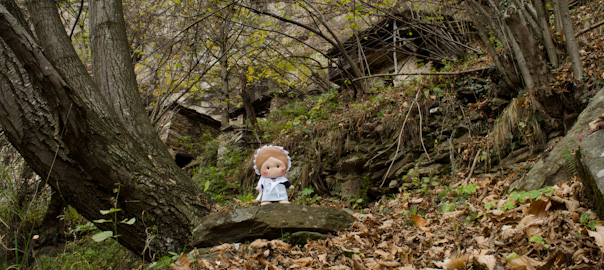Hi everybody!
Today we are in high Angrogna Valley, and I want to take you to a really special place: today we are at Barma Mounastira (also known as Barma Monastir).
First of all, let me explain (to those who don’t know it) what a “barma” is: this term, probably derived from the Ligurian word “balma”, is for caves and all of rock shelters. In the mountains a barma is a place where shepherds and flocks can take refuge in when the weather is bad and sometimes, like here, a barma can become a real home.
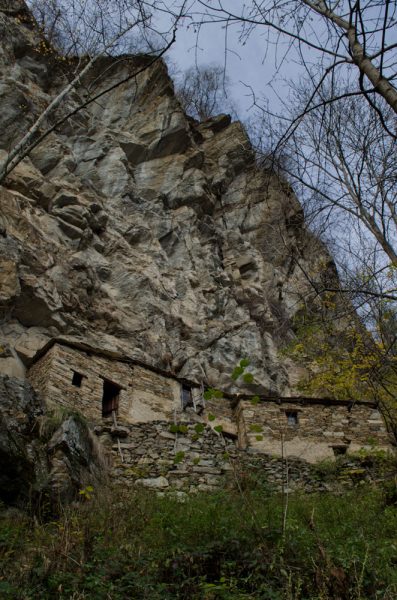
This long row of abandoned houses you can see, which formerly belonged to one of the Monastier families (or Mounastìe, Waldensian surname about which we have traces as far back as 1232) of the valley, is located at the foot of a large rock from which you can see the whole land below.
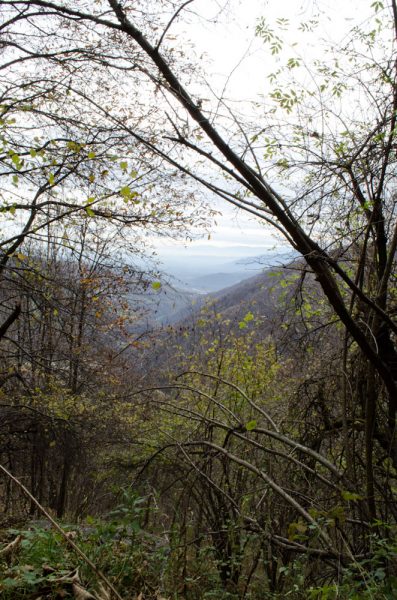
First of all I would like to make a recommendation: as most of the appeal of this place is due to the fact that time here seems to have suddenly stopped, please just leave everything where it is, maybe one day its inhabitants will come to take their things back! …and, as well, be careful and watch your step! Put your boots on, beware of collapses of the cave and – last but not least – one more important thing: every time you go to the mountain do not abandon waste paper or other garbage …always keep a little room in your backpack for the garbage (I myself eat lots of sandwiches in my walks, but always throw my rubbish in the bin once I’m back home!)

Today Barma Mounastira is an abandoned place; not even shepherds bring their sheeps here any more to graze the grass, so the vegetation around grew thicker and thicker.
The best season to go there is autumn, when leaves fall from trees and you can see the barma even from big distance. It seems that the sun here sets very early in the evening, and that the world here is made of shadows… But did you notice the smart work people who lived here made to make houses out of rocks?
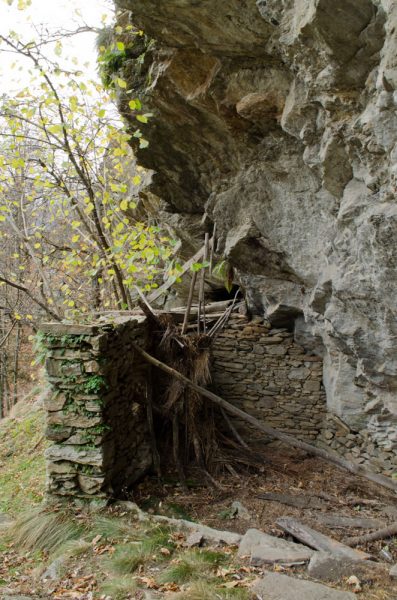
In this caves nothing was missing: there were stables for animals (round here shepherd used to breed cows, goats, sheeps, pigs, rabbits, chickens, but also donkeys and mules for carriage), a two-floor house with a kitchen at the top floor, a workshop for building and repairing tools, and a barn.
At the right of the building there is one more three-floor house not leaning under the rock, but aside the slope of the mountain, with a large oven in it. This tells us that at a certain point many people used to live in the barma.
In order to reach the top floor of the large central house, where the barn used to be and where cereals were handled, people had to climb a steep staircase… well, there was no much room, and it had to be used the best way as possible!!!
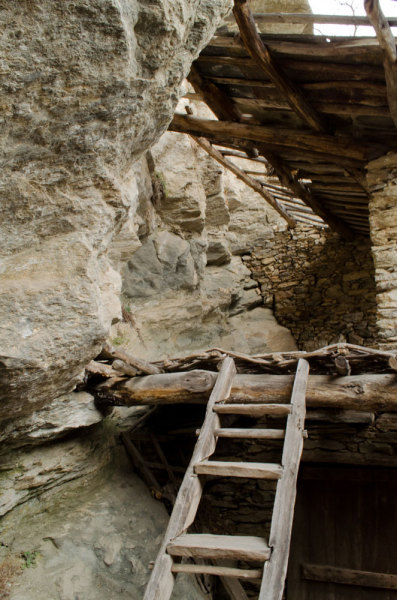
What was life like in Barma Mounastira? …as in the whole valley, it must have been a very hard life. But you know what? If people struggled so much to build a house here, there must have been a benefit. The land here was probably cheap, and if you had good manual skills (as inhabitants of these places used to have), a little workshop would be enough to build all of the needed tools.
All of the poles used to build walls and houses and balconies were hand-made and hand-worked here. Nothing came from the valley. People lived on what they could find in the woods and on what they used to grow in the garden underlying the barma (rye, barley, wheat, buckwheat, beans, potatoes); from bred animals people could get milk, cheese, butter. In the morning people used to have breakfast with cornmeal mush and milk, and for dinner usually pasta with beans or rice and milk.
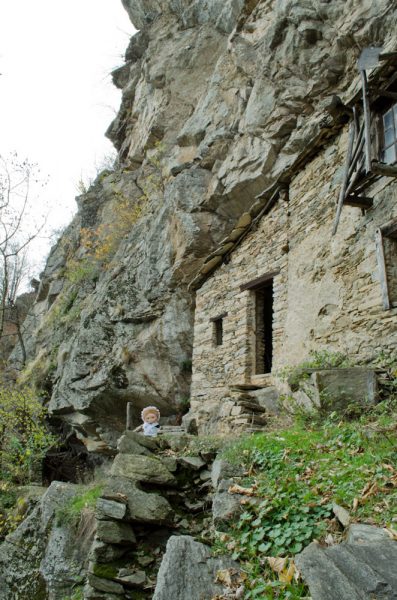
In winter children had to dig their own paths through the snow in order to reach the hamlet of Pradeltorno, where the nearest school was. So the kids put on their “garaudu” (kind of big and thick socks that had to be put on boots and tied under the soles) and walked through the snow. If snow was too much, kids would ask their parents to make a path for them in the snow with snowshoes.
Kids used to go to school only in winter, ‘cause, as soon as the season turned to good weather, all of them (even the youngest ones) would be involved in country works.
In May, furthermore, they would all move with their families to the pastures in the high mountains, so the way to the school would be really too long!
While the animals were at the pasture, there was also the wool to spin… And that wool would be needed to sew winter clothes!
It was for sure a very hard life, a life full of things to do, and all of the kids were surrounded by their large families… I guess for sure that those kids were told many and many stories! I’d almost like to be there with them… A long, long time ago…
How to get here:
reach Pradeltorno (district of Angrogna) coming from Torre Pellice and, once you leave the Provincial Street 161 entering the town, take Generale Martinat Street right before the bridge on Angrogna creek.
Go through the whole street and you’ll reach the hamlet known as Chiot dl’Aiga, then take the road on your left (Pradeltorno Street) that takes to the valley bottom.
Once in Pradeltorno, park your car and walk along the street between the cemetery and the Waldensian temple.
Over the temple turn right into a not paved road. After a ten minutes’ walk you will get to the small hamlet of Fau. The road here turns into a small path and after a 20 minutes’ walk on a flat path you’ll get to the village of Barma Mounastira.
Do you want to read the tale in Italian ?
